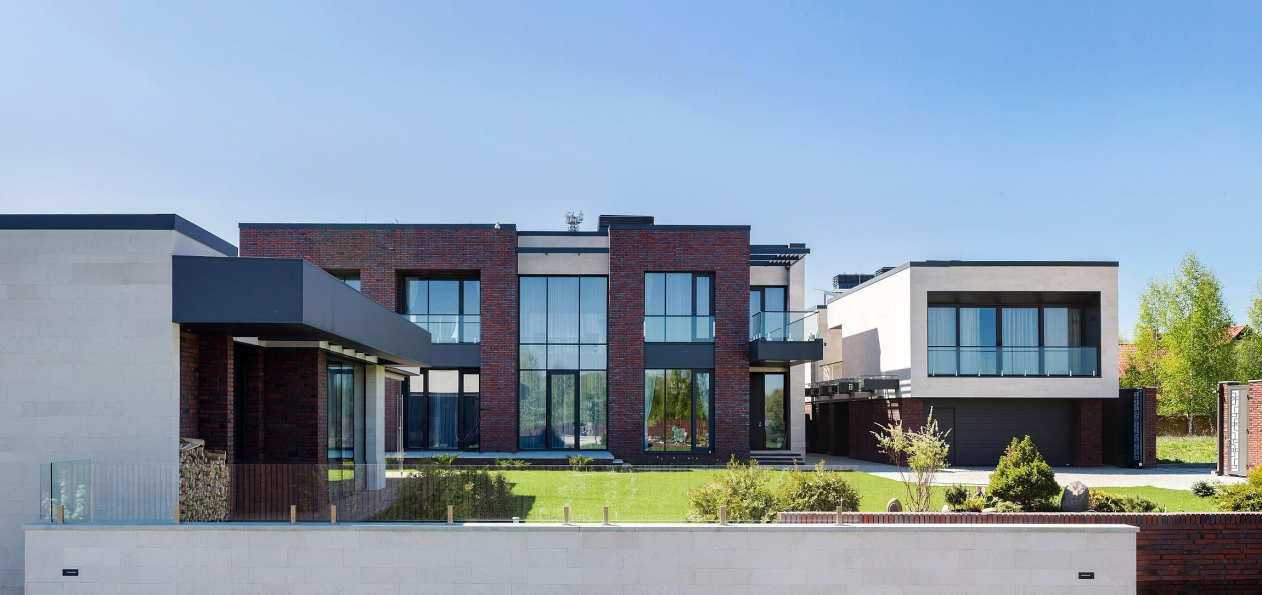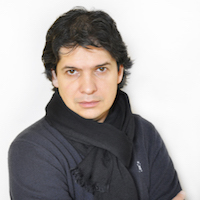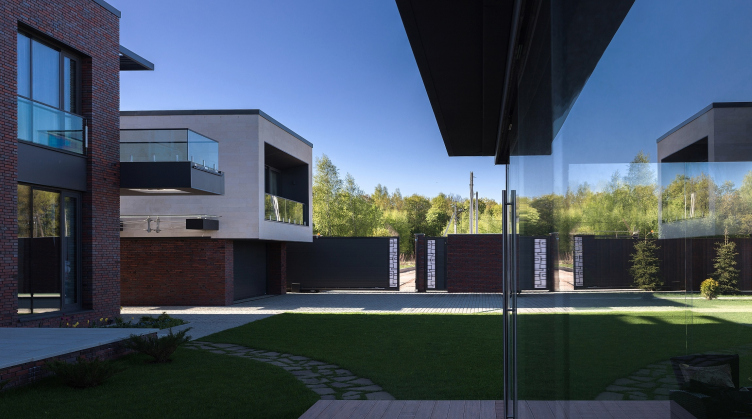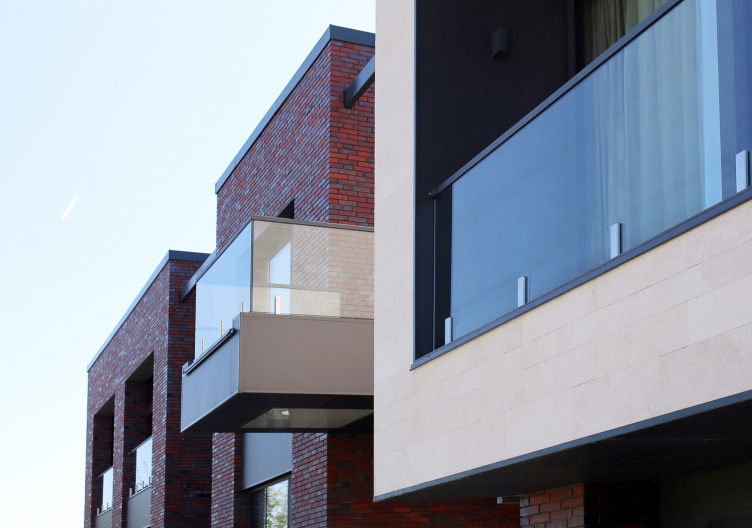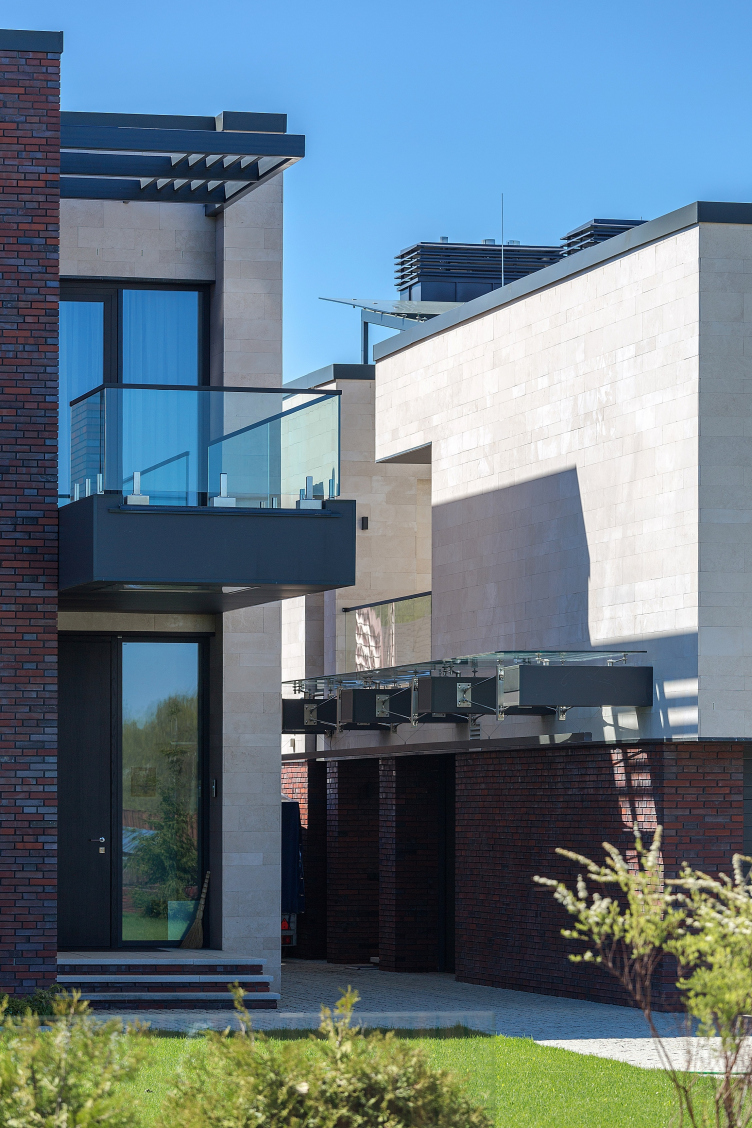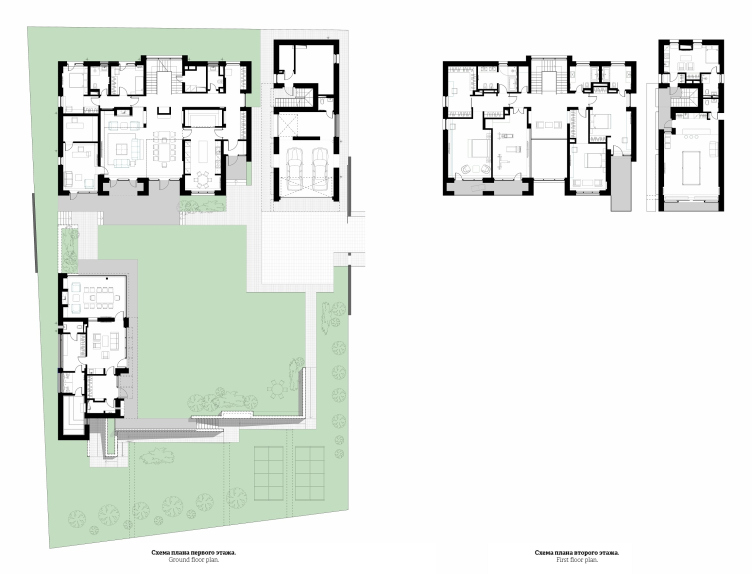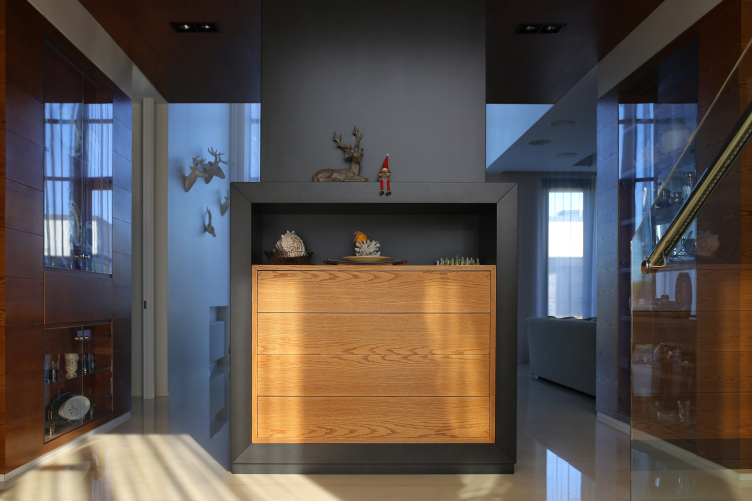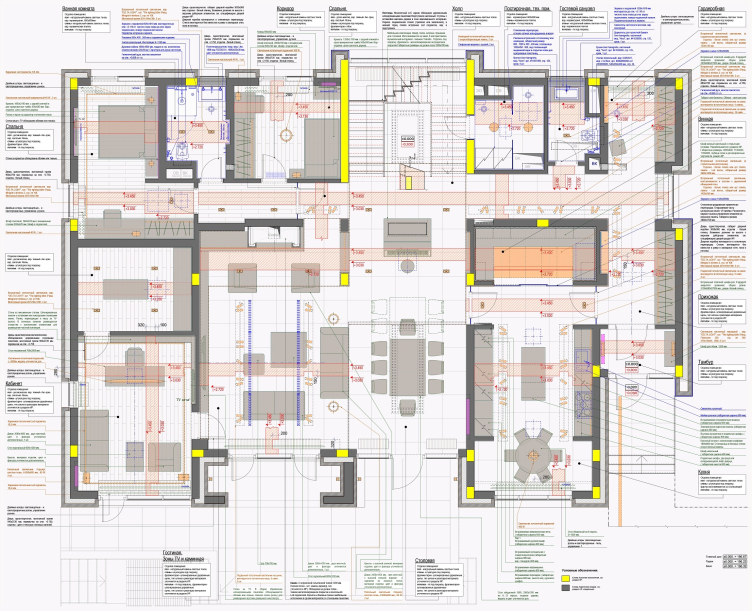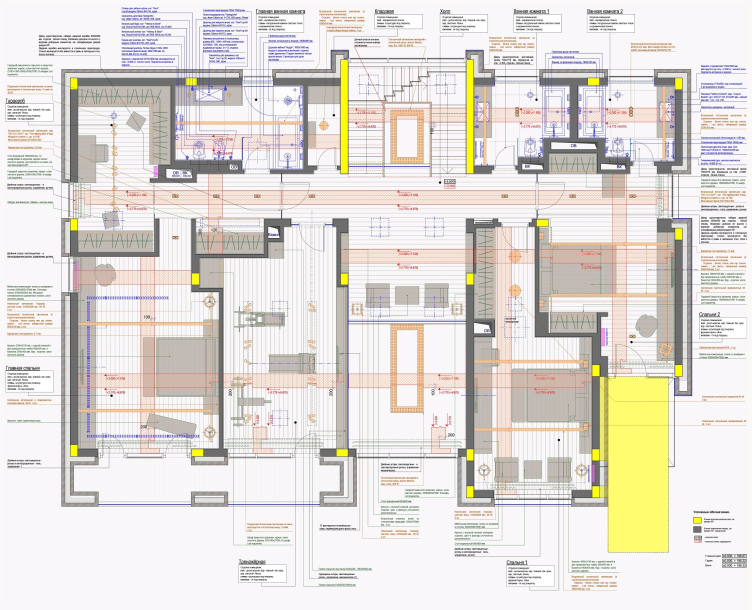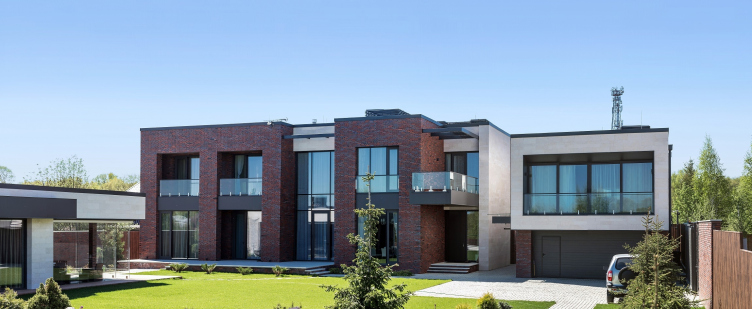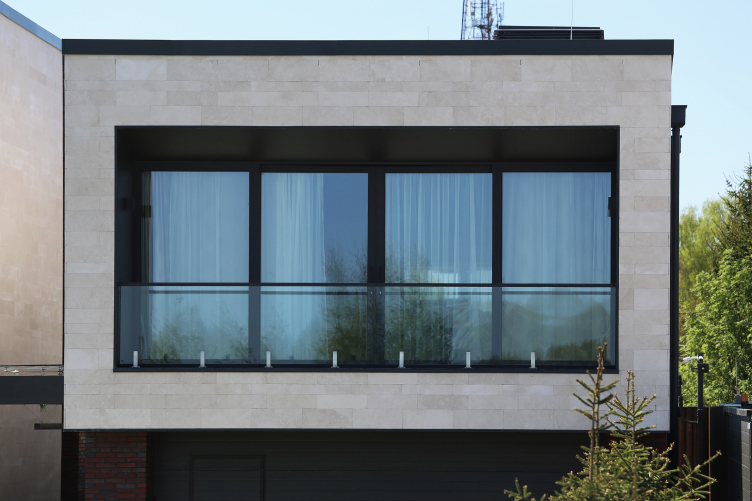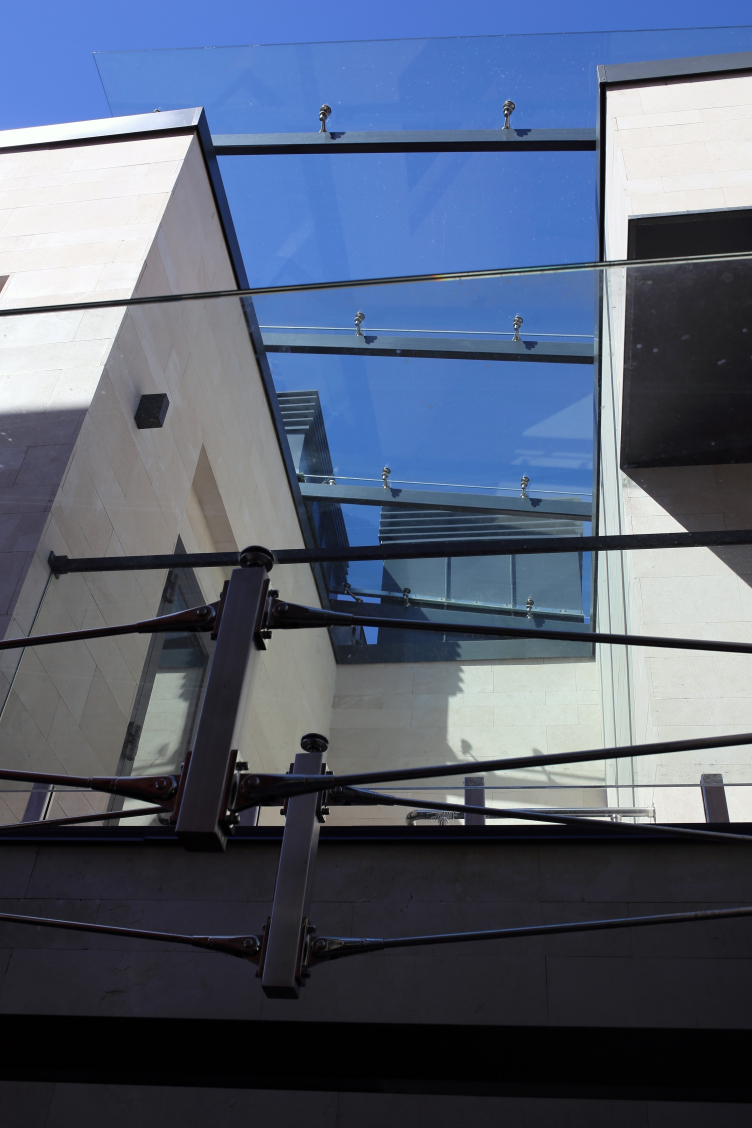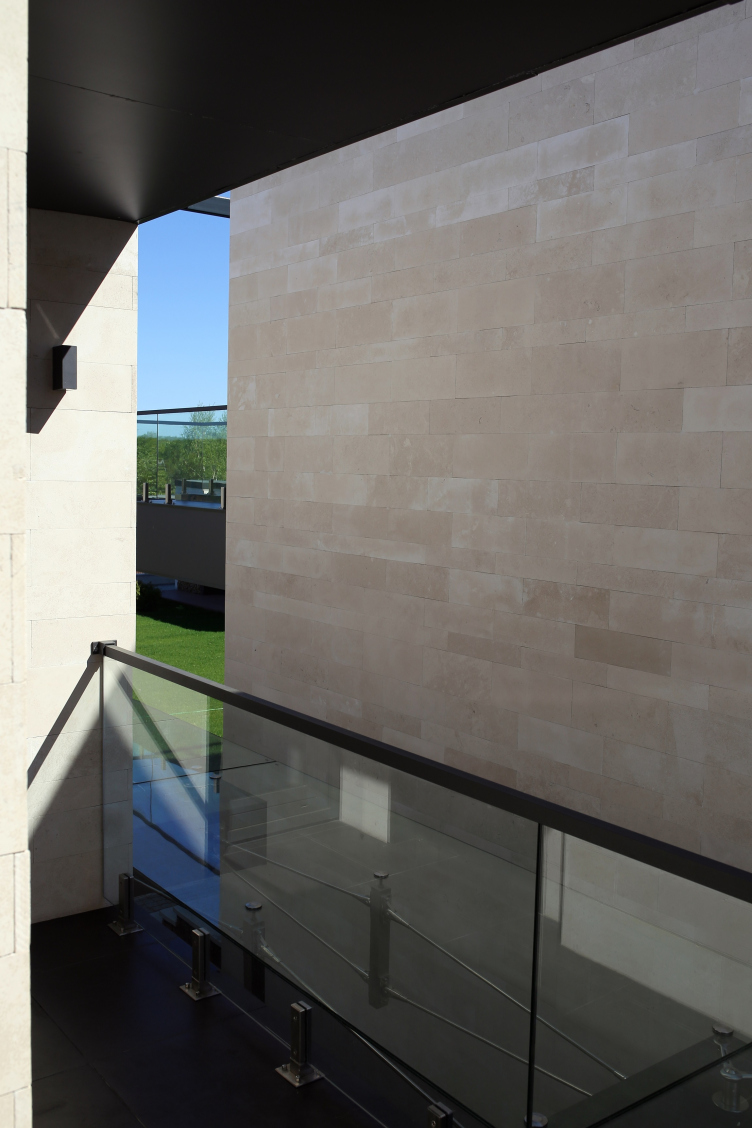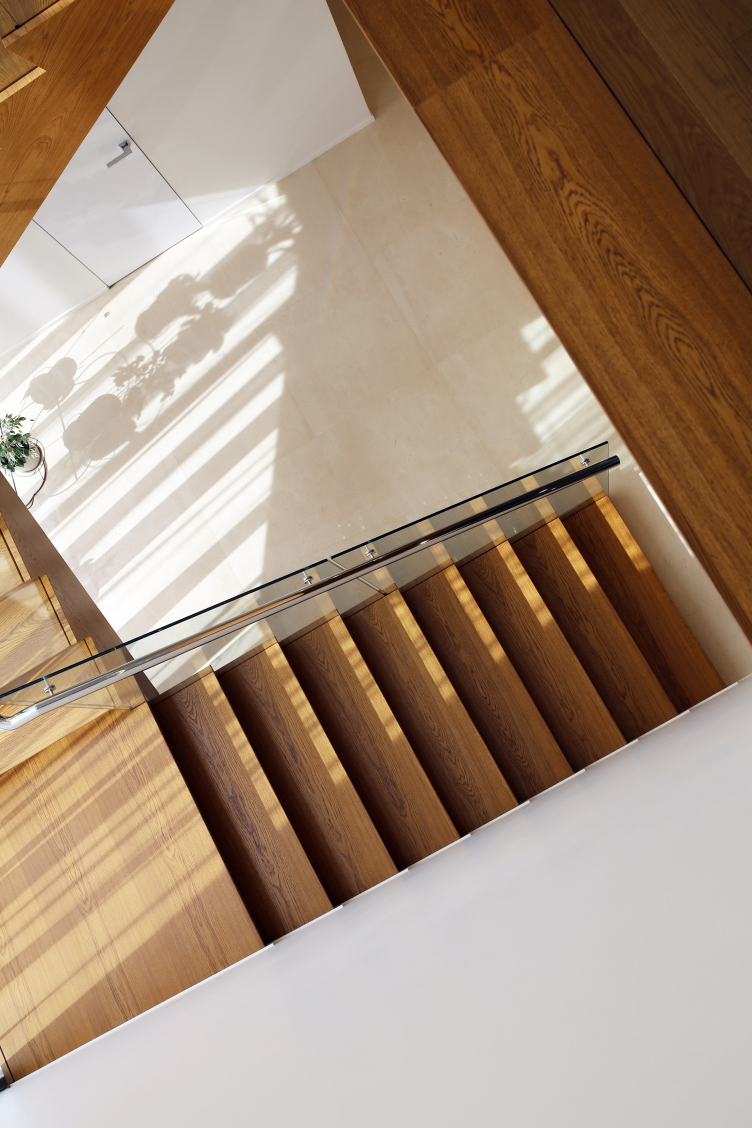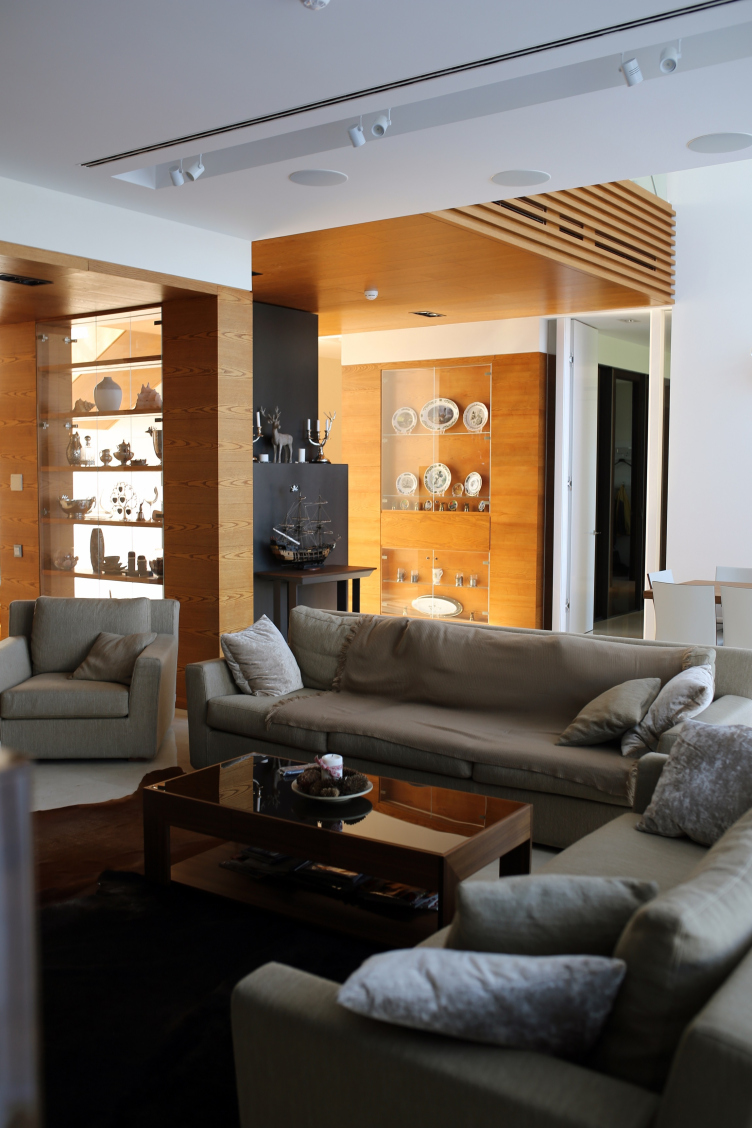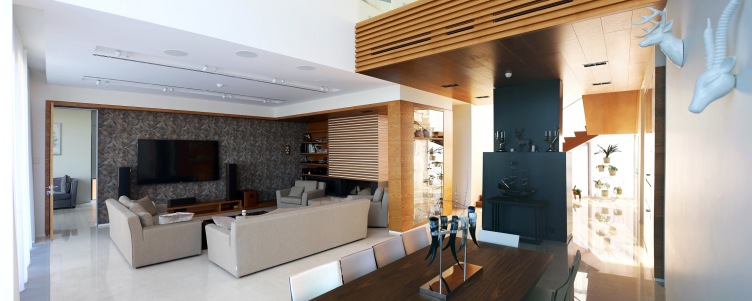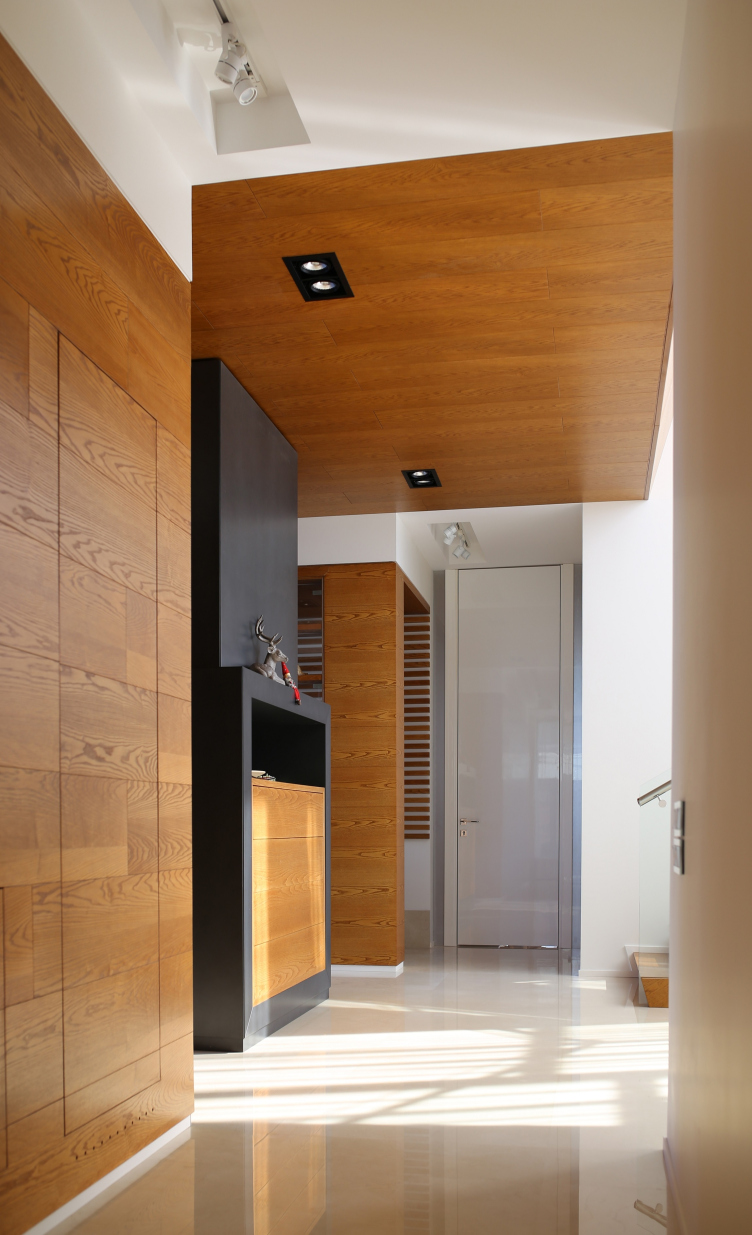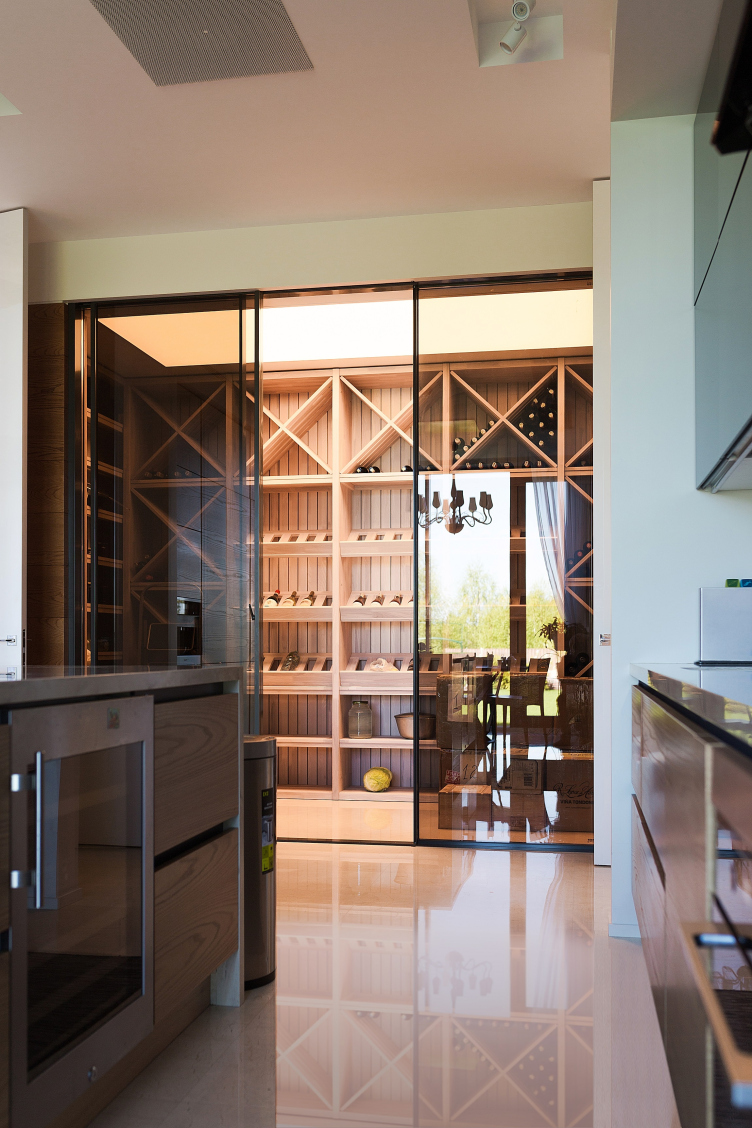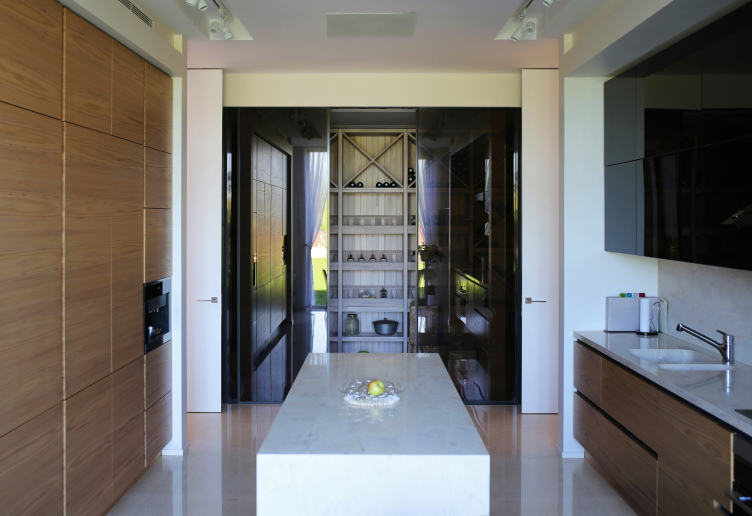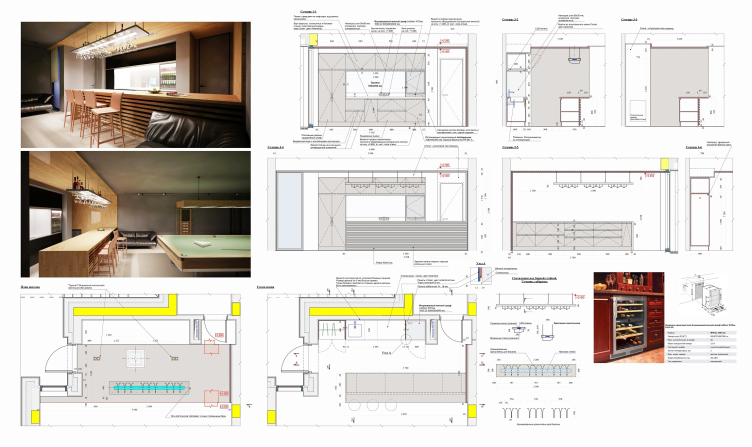This is rarely the case when a client trusts the architect one hundred percent and does not try to turn the construction of the house into a form of psychotherapy. But “Fourth Dimension” was lucky. “The customer himself is a very good builder –Mikhail Kanunnikov says – We discussed the layout and defined the general direction. We were told that the house should be simple in shape, orthogonal, of high-quality materials, with brick veneer. As an example, the client cited the brick factory “Stanislavsky”. After which the customer withdrew”.
P-House countryside residence © Fourth Dimension
P-House countryside residence © Fourth Dimension
The house turned out to be strict, orthogonal, but far from simple. The Mix Stanislavsky, consisting of eight types of bricks of different colors and shapes, among which there was even a curvilinear shape, was taken as a sample for wall facing. The architects offered their mix of German Klinker bricks. They also employed a special type of brickwork: the brick is suspended and stitched – the owner of the house himself took an active part in perfecting this technology and achieved a high quality of craft. The same quality is read throughout the whole house: in the glass fences of balconies and terraces, metal structures, stone cladding, furniture and other equipment custom-designed by architects.
P-House countryside residence © Fourth Dimension
P-House countryside residence © Fourth Dimension
P-House countryside residence © Fourth Dimension
P-House countryside residence © Fourth Dimension
The house is intended for permanent residence of three generations of the family. The land is located near the village of Slavino, founded by the renowned eye surgeon Fedorov, near the ski slope on Dmitrovka, where the authors would ski and snowboard during their college years. The plot is sloping towards a ravine, a stream flowing below. The house essentially consists of three parts – the main building, the guard house with a garage on the first floor, and a bath. On the master plan, the buildings form an “L”, creating a natural boundary for a courtyard. The main building stands at the top, on the western edge of the site, the recreational part with a bathhouse hangs over the stream, with magnificent views that one can admire from the height of the slope. The upper part of the yard is a lawn designed for outdoor activities, the lower part is a vegetable garden for the older folks.
P-House countryside residence © Fourth Dimension
The layout of the main house is built as a suite of rooms located along the courtyard and having exits to it. There is a front kitchen with a wine room, a double-height dining room, a fireplace and an office. A corridor separates the front suite from the older generation and guest bedrooms; access to the bedroom part can be blocked if it is necessary for someone to relax. The corridor ends on two sides with windows, i.e., the house gets light from north to south here. The central double-height dining room with a huge stained glass window overlooks the courtyard, and there a staircase with a window across from it. Thus, the sunlight “pierces” the house crosswise: from north to south and from west to east. Another west-east light axis is located opposite the glass entrance, on the right side of the house, that is, the entrance is “to the light”. So the spaces do not just flow into each other – a whole dedicated “light” scenario has been written here.
P-House countryside residence © Fourth Dimension
P-House countryside residence © Fourth Dimension
P-House countryside residence © Fourth Dimension
P-House countryside residence © Fourth Dimension
On the second floor there are master and children’s bedrooms, a master’s office, a gym, opening onto a double-height living room with a balcony. All the bedrooms are facing the courtyard with their windows to the floor and stanzas with glass fencing. And from one of the bedrooms you can go to a cantilevered balcony, which hangs over the main entrance suspended on cables. The cantilevered structure with a glass enclosure and a glass canopy is a very dramatic element in the composition of the house. In addition to underlining the entrance, it is an energetic gesture, an exclamation mark: not for the sake of function, but for the sake of aesthetics. There is a glass rectangle in the floor of the balcony. Again, not only to let in the light, but also for adrenaline: walking on the glass is invigorating.
P-House countryside residence © Fourth Dimension
P-House countryside residence © Fourth Dimension
In general, the composition of the house is quite curious. Despite the orthogonality and seeming simplicity, the house turned out to be very rich plastically, multilayered and even dramatic. Due to the selected building materials – dark brick, light limestone and ferrous metal, as well as glass, which is more likely to be responsible for dematerialization, for “pauses”, there are feelings of contrasting and mutual penetration of red and white volumes. This “war of red and white” creates a special intrigue. The surface itself is also interesting. The main courtyard facade reflects the internal structure, it has brick “projections” and glass gaps, the division corresponding to the rooms. The projections, in turn, are deepened with stanza balconies trimmed with black metal, as well as a black metal balcony-accent above the entrance.
P-House countryside residence © Fourth Dimension
P-House countryside residence © Fourth Dimension
P-House countryside residence © Fourth Dimension
P-House countryside residence © Fourth Dimension
P-House countryside residence © Fourth Dimension
To the right of the main building there is a guard house (of a slightly smaller height) lined with limestone. This is a conditional name because most of the second floor is essentially a billiard room with a bar and a balcony. It is facing the garden, just like the other rooms of the owners of the house, and the security room looks outward in accordance with its function. The space between the main building and the guard house is a kind of architectural feast for one’s eyes; it is complex, the authors admire the dialectic of mass and space, heavy and light, material and transparent, and flawless connection of different units. There is a feeling that the temperament of architects does not fit into the scale of a country house, and the same plastic themes could just as well be developed in a larger form.
P-House countryside residence © Fourth Dimension
In the sauna house, besides the sauna itself, there is a recreation room, changing rooms, summer and winter terraces. Its interior, in contrast with the dark brick of the façade, is dominated by light wood (oak and walnut). The stairs, doors, fireplace, and storage systems were designed by architects specifically for this house. Many elements of the interior are lined with oak panels. The floors are finished with solid wood and natural stone. This is a “masculine” interior: the emphasis is laid on the architectural elements, and not on draperies and decorations. According to Mikhail Kanunnikov, the client was very tactful of the architects’ work, and introduced his things into the house very delicately, so that even after a year of his life the architectural concept was preserved almost in its original form.
P-House countryside residence © Fourth Dimension
P-House countryside residence © Fourth Dimension
P-House countryside residence © Fourth Dimension
P-House countryside residence © Fourth Dimension
P-House countryside residence © Fourth Dimension
P-House countryside residence © Fourth Dimension
P-House countryside residence © Fourth Dimension
P-House countryside residence © Fourth Dimension
P-House countryside residence © Fourth Dimension
P-House countryside residence © Fourth Dimension

